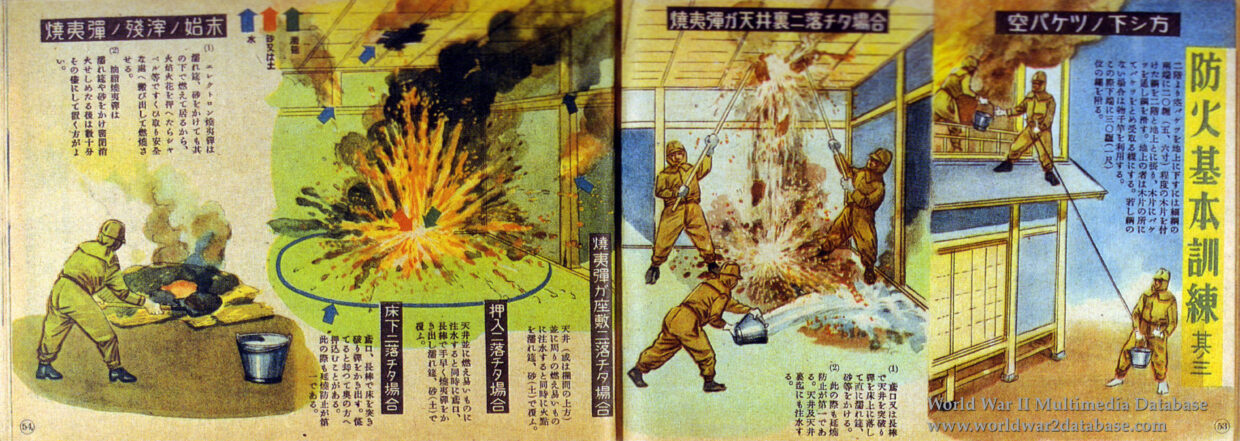| Pages from a civil defense book issued to Japanese homes after the Doolittle Raid. The Japanese militarists considered air raids improbable and unpatriotic to plan for civil defense. Tonarigumi (neighborhood associations) that organized civilians into enclaves of 10-12 families, began to hold regular drills for fighting “kinka“ or “chikabi“ (a fire in one‘s neighborhood) from 0500-0700 Hours daily after the Doolittle Raid. Each household was expected to contribute a member of the family to the Tonarigumi firefighting training. With so many men in the armed forces, the civilians were mostly women. Japanese firefighting techniques and equipment were inadequate even by 1940s standards. Most cities lacked modern firefighting equipment. Most units were hand- or horse-drawn and cities lacked enough water to fight a major conflagration. Surprisingly, since Japan had experienced major fires for centuries, no effort was made to upgrade equipment and training for firefighters. As you can see here, the firefighters are using buckets and poles to contain a blaze. In actuality, antipersonnel bombs were mixed in with the incendiaries to kill or neutralize the firefighters. Bombs such as the M36 cluster, which contained scores of 4-pound M69 incendiaries, overwhelmed the Japanese firefighters by placing dozens or hundreds of caustic jellied gasoline bombs on a single block. | |
| Image Filename | wwii1188.jpg |
| Image Size | 4.17 MB |
| Image Dimensions | 5909 x 2100 |
| Photographer | Unknown |
| Photographer Title | |
| Caption Author | Jason McDonald |
| Date Photographed | November 30, 1942 |
| Location | |
| City | |
| State or Province | |
| Country | Japan |
| Archive | |
| Record Number | |
| Status | Caption ©2007, ©2024 MFA Productions LLC Please Do Not Duplicate or Distribute Without Permission |

Author of the World War II Multimedia Database

